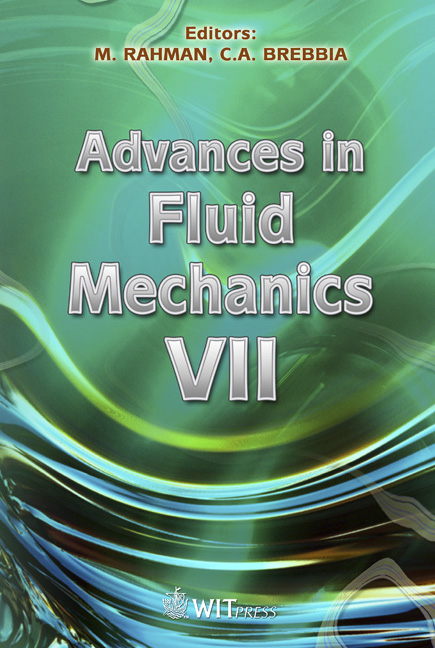CFD Modeling Of Turbulent Boundary Layer Flow In Passive Drag-reducing Applications
Price
Free (open access)
Transaction
Volume
59
Pages
12
Page Range
79 - 90
Published
2008
Size
652 kb
Paper DOI
10.2495/AFM080081
Copyright
WIT Press
Author(s)
R. I. Bourisli & A. A. Al-Sahhaf
Abstract
In this paper, the turbulence boundary layer, velocity and skin friction coefficient characteristics of grooved surfaces are studied. Flow over surfaces with transverse square, triangular and semicircular grooves are numerically modeled via the finite volume method. Comparisons are made on the basis of the grooved surfaces’ skinfriction coefficient, normalized by that of a smooth surface, with Reynolds number in the vicinity of 2 × 106. Results show that square grooves are superior to the two other groove geometries in reducing the drag. Viscous damping in all grooves keeps skin friction inside them well below the surface above. However, the interior geometry of square grooves allows them to balance the net inward momentum due to the sudden absence of the wall in a way that minimizes disturbance of the main flow while taking advantage of the restart of the boundary layer. As a consequence to the separation of the boundary layer, an inevitable stagnation point within the groove must exist. Square grooves had the highest such stagnation point along the backward-facing side of the groove. The shortness of the resulting upward boundary layer from the stagnation point to the corner produces smaller near-wall secondary flow motion and more relaxed merger with the main flow. All this contributes to enhanced drag reduction for the described groove structure. Keywords: viscous drag, skin-friction coefficient, grooved surfaces, turbulent boundary layer, momentum transfer. 1 Introduction In the past, turbulence was thought to be totally random in terms of its microscopic flow behavior and initiation mechanisms. However, some sort of order was found in turbulent flows (Hama et al. [1] and Kline et al. [2]) which allowed engi-
Keywords
viscous drag, skin-friction coefficient, grooved surfaces, turbulent boundary layer, momentum transfer.





